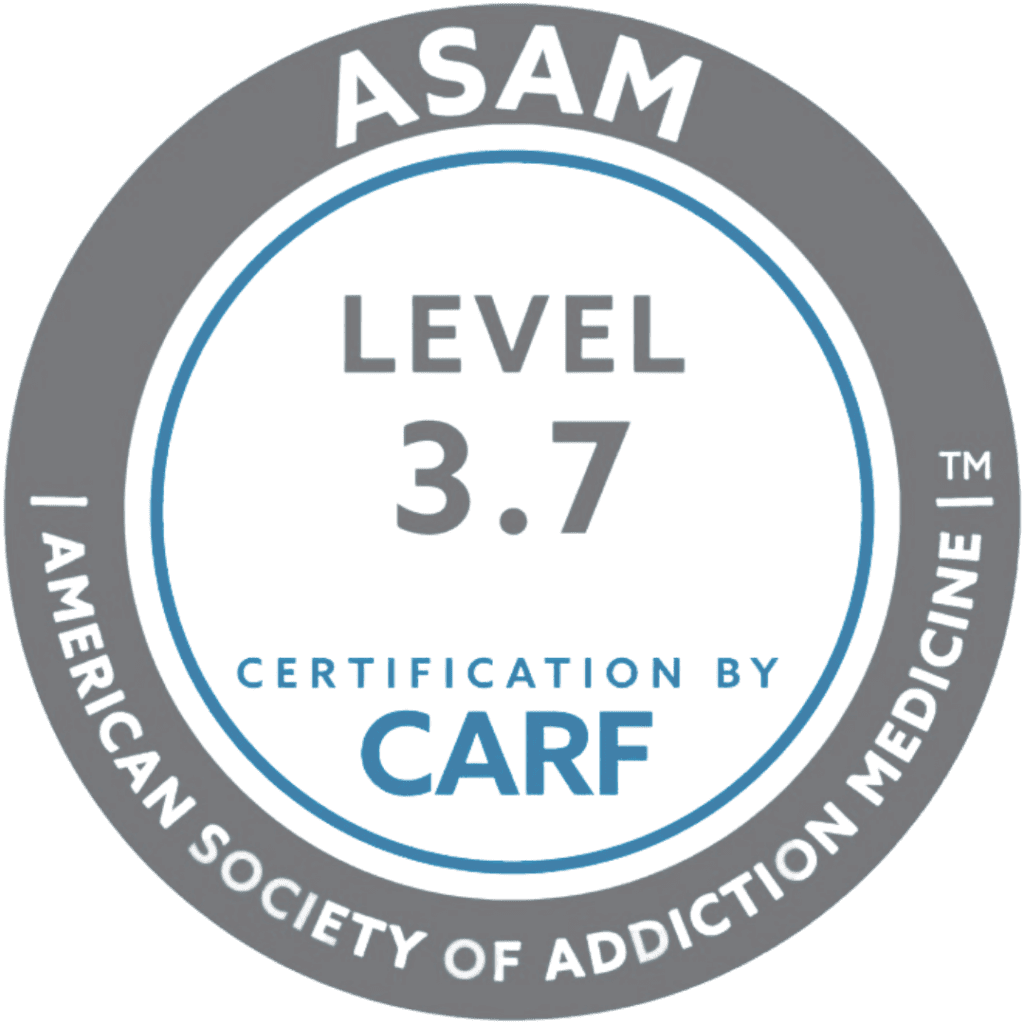Fentanyl is an extremely powerful synthetic opioid that has become a major contributor in the overdose epidemic. Like other opioids, fentanyl causes dependence and can lead to painful withdrawal symptoms when stopped abruptly. Learning to identify fentanyl withdrawal can help you get the right help to safely detox.
What Is Fentanyl?
Fentanyl is a powerful synthetic opioid medication that helps manage severe pain. It’s often prescribed following surgery or to treat chronic pain, but it’s also classified as a Schedule II controlled substance in the United States because of its high potential for addiction and the risk of overdose. Fentanyl is roughly 50 to 100 times more potent than morphine.
Fentanyl brand names include Actiq, Fentora, and Duragesic, which doctors prescribe in pill form, as a liquid, or as a transdermal patch. However, illicitly manufactured fentanyl has flooded the illegal drug market. It’s often mixed with heroin, cocaine or pressed into counterfeit prescription pills. Even small amounts can lead to overdose due to its extreme potency. Unfortunately, new mixtures containing isotonitazene, an extremely powerful opioid, and xylazine, an animal tranquilizer are making fentanyl overdoses an even bigger problem.
If you don’t know that the heroin you bought has been cut with fentanyl, you’d likely use your regular dose of heroin. A much smaller amount of fentanyl can cause an overdose because it’s so strong. You can easily go into respiratory distress because your body is unable to process fentanyl as quickly as it does other drugs.
In the US, overdose deaths involving synthetic opioids like fentanyl increased over 15-fold from 2013 to 2019. Fentanyl and similar synthetics contribute to the most overdose fatalities today.
Why Do Opioids Cause Withdrawal?
Opioids like fentanyl bind to and activate opioid receptors in the brain that control pain, mood, and reward pathways. This provides pain relief and euphoria. With ongoing use, the brain adapts by reducing natural opioid receptor activity and production. This leads to tolerance, dependence, and opioid addiction.
Stopping opioids abruptly then leads to a neurochemical imbalance as the brain is no longer producing enough natural opioids. Opioid withdrawal symptoms emerge as the body attempts to re-balance itself in the absence of the drug. These symptoms can be extremely unpleasant but are not directly life-threatening.
What Are the Symptoms of Fentanyl Withdrawal?
Fentanyl withdrawal can be uncomfortable, but it’s generally not life-threatening. The severity and duration of withdrawal symptoms vary depending on factors like how dependent you are on fentanyl, how long you’ve used it, and your overall health.
Fentanyl withdrawal involves both physical and psychological symptoms that typically start within 12-24 hours after last use. They peak around days 2-3 and can last about a week or more.
Common physical withdrawal symptoms include:
- Muscle aches and pains
- Headaches, stomach cramps, nausea
- Trembling, chills, goosebumps
- Dilated pupils, runny nose, sweating
- Rapid heart rate, high blood pressure
Common psychological withdrawal symptoms include:
- Drug cravings and anxieties
- Irritability, agitation, trouble sleeping
- Depression, lack of motivation
- Trouble concentrating
Fentanyl withdrawal is highly uncomfortable but generally not medically dangerous. However, some symptoms like dehydration, racing heart rate, and lack of sleep can complicate matters.
Get confidential help from our addiction and mental health treatment facilities located across the United States. Call to join one of our quality programs today!
Speak With Our Admissions TeamHow Long Does Fentanyl Withdrawal Last?
Fentanyl is fast-acting but also leaves the system quicker than longer-acting opioids. Overall withdrawal duration is around 7-10 days. Psychological issues like depression and cravings take longer to fully subside.
The fentanyl withdrawal timeline consists of two phases: acute and protracted. The timeline and symptoms are different for each. Here’s a general breakdown.
Phase 1: Acute Fentanyl Withdrawal
The acute withdrawal phase of the fentanyl withdrawal timeline is the immediate set of symptoms that occur when you stop using fentanyl. They are a result of your body and brain adjusting to the absence of the drug, and they can be challenging.
- Acute withdrawal symptoms begin soon after your last dose of fentanyl.
- Acute withdrawal symptoms can take a few hours to appear and up to 10 days to subside. The peak occurs around day three for most people.
- Symptoms feel like a cold or the flu, and may include:
- Anxiety
- Agitation
- Diarrhea
- Elevated heart rate
- Excessively runny nose
- Insomnia
- Nausea and vomiting
- Shivering or sweating
- Uncontrollable limb movements
The acute withdrawal phase is when medication-assisted treatment (MAT) is most often used.
Phase 2: Protracted Withdrawal
Those who experience symptoms of fentanyl withdrawal after 10 days are said to be in protracted withdrawal. It is also known as post-acute withdrawal syndrome (PAWS), and it’s the result of your brain and body continuing to adjust to the absence of fentanyl and the changes that occur during prolonged drug use. It varies in intensity and duration from person to person.
While protracted withdrawal can be challenging and frustrating, it’s a sign that your brain and body are gradually healing. Protracted withdrawal is a challenging phase of the fentanyl withdrawal timeline, so having a team of substance abuse counselors at your side can make all the difference.
- Protracted withdrawal begins 10 days after your last dose of fentanyl.
- Withdrawal symptoms can last for weeks, months, or even longer.
- Symptoms tend to be more mental or behavioral than physical, such as:
- Anxiety
- Depression
- Emotional sensitivity
- Irritability
- Mood swings
- Problems sleeping
- Problems with memory or concentration
In some cases, individuals with severe and long-standing fentanyl addiction may benefit from long-term MAT to help maintain their recovery. This approach can reduce the risk of relapse and overdose.
Who Can Help with Fentanyl Detox?
Withdrawing from fentanyl is extremely tough both physically and mentally. Attempting detox alone at home can be dangerous and unlikely to succeed long-term.
Seeking help through a medically supervised detox program can provide:
- A safe, monitored environment during peak withdrawal.
- Medications to ease symptoms like anxiety, nausea, pain.
- Nutritional support and hydration.
- Psychological and emotional support.
- Education about addiction and recovery.
This helps dramatically improve comfort, reduces complications, and sets the stage for achieving lasting sobriety via further treatment.
Looking for quality treatment for substance abuse and mental health that’s also affordable? Aliya Health Group's treatment facilities accept most major insurance providers. Get a free insurance benefits check now!
Check Your CoverageFentanyl Withdrawal Help at Aliya Health Group
Here at Aliya Health Group, we provide comprehensive medical detox services tailored to each client’s needs. Our experienced medical team develops customized protocols using medications and therapies to manage fentanyl withdrawal symptoms.
Our levels of care for fentanyl withdrawal and treatment include:
- Medical detox: safely, comfortably, and effectively cleanse your body of alcohol and drugs using the latest medical, holistic, and therapeutic approaches.
- Residential treatment: living in a non-hospital, licensed residential facility that provides safe housing and medical care. Our services include individual and group therapy, cognitive behavioral therapy (CBT), dual diagnosis, dialectical behavior therapy (DBT), and more.
- Partial hospitalization program (PHP): best for structured addiction treatment without 24-hour supervision. Instead, you live at home or in a sober-living residence while you recover from fentanyl.
- Intensive outpatient program (IOP): therapy and support at a treatment facility while you live at home or in a sober-living home. IOPs are typically shorter than inpatient programs, with a focus on re-integrating you into society and building relapse-prevention skills.
- Outpatient rehab: a safe and less intensive option that allows you to continue to receive addiction treatment for an extended period while you maintain a regular commitment to family, work, or school.
Getting through fentanyl withdrawal is tough but very possible with the right help. We’re here to provide the individualized support you deserve to get your life back. Contact us today to learn more about our fentanyl detox programs.















